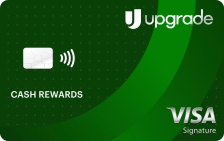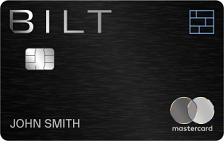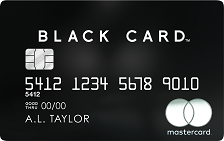Filter Options
×-
-
Unselect all
-
Unselect all
-
Unselect all

Showing 288 Cards
Sort By Column Name:
Synchrony Preferred World Mastercard®
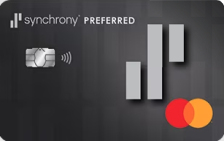
Synchrony Preferred World Mastercard®
- 16.74% to 23.74% variable based on creditworthiness and the Prime Rate Regular Purchase APR
- 16.74% to 23.74% variable based on creditworthiness and the Prime Rate Balance Transfer APR
- 29.99% Cash Advance APR
At a Glance
The Synchrony Preferred World Mastercard® offers basic rewards and a simple redemption process, and more – all for no annual fee.
- Best Benefits
- Rates & Fees
- Why Should You Apply?
- No annual fee
- Earn unlimited 1% cash back rewards on every purchase
- Contactless payment compatibility
- Regular Purchase APR: 16.74% to 23.74% variable based on creditworthiness and the Prime Rate
- Balance Transfer APR: 16.74% to 23.74% variable based on creditworthiness and the Prime Rate
- Balance Transfer Transaction Fee: Either $10 or 4% of the amount of each balance transfer, whichever is greater
- Cash Advance APR: 29.99%
- Cash Advance Transaction Fee: Either $10 or 5% of the amount of each cash advance, whichever is greater
- Foreign Transaction Fee: 3% of the transaction amount in U.S. dollars
- Late Payment Penalty Fee: Up to $41
- Return Payment Penalty Fee: $39
- You have good credit
- You prefer cash back rewards as a statement credit
- You don’t want to pay an annual fee
Synchrony Plus World Mastercard®
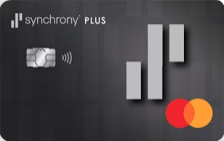
Synchrony Plus World Mastercard®
- 16.74% to 23.74% variable based on creditworthiness and the Prime Rate Regular Purchase APR
- 16.74% to 23.74% variable based on creditworthiness and the Prime Rate Balance Transfer APR
- 29.99% Cash Advance APR
At a Glance
The Synchrony Plus World Mastercard® offers unli8mited 1% cash back on all purchases plus a simple redemption process, and more with a $0 annual fee.
- Best Benefits
- Rates & Fees
- Why Should You Apply?
- No annual fee
- Earn unlimited 1% cash back rewards on every purchase
- Contactless payment compatibility
- Regular Purchase APR: 16.74% to 23.74% variable based on creditworthiness and the Prime Rate
- Balance Transfer APR: 16.74% to 23.74% variable based on creditworthiness and the Prime Rate
- Balance Transfer Transaction Fee: Either $5 or 3% of the amount of each transfer, whichever is greater
- Cash Advance APR: 29.99%
- Cash Advance Transaction Fee: Either $10 or 5% of the amount of each cash advance, whichever is greater
- Foreign Transaction Fee: 3% of the transaction amount in U.S. dollars
- Late Payment Penalty Fee: Up to $41
- Return Payment Penalty Fee: $39
- You have good or excellent credit
- You prefer basic cash back rewards as a statement credit instead of other rewards
- You don’t want to pay an annual fee
OneMain Financial BrightWay℠
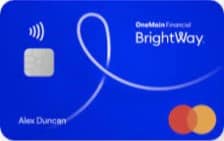
OneMain Financial BrightWay℠
- 29.74% or 30.49% variable based on the Prime Rate Regular Purchase APR
- 29.74% or 30.49% variable based on the Prime Rate Balance Transfer APR
- 29.74% or 30.49% variable based on the Prime Rate Cash Advance APR
At a Glance
The OneMain Financial BrightWay℠ credit card can help you build credit, lower your APR, and graduate to no annual fee - all from one card. The Mastercard from WebBank offers the chance of a credit limit increase or lower APR in as little as six months, but requires an invite to apply.
- Best Benefits
- Rates & Fees
- Why Should You Apply?
- Build your credit with no-time payments and graduate to the $0 annual fee Brightway+ credit card
- Lower APR or higher credit limit with 6 on-time payments
- 24/7 zero liability fraud protection
- Stay on top of your account with the Brightway mobile app
- Regular Purchase APR: 29.74% or 30.49% variable based on the Prime Rate
- Balance Transfer APR: 29.74% or 30.49% variable based on the Prime Rate
- Balance Transfer Transaction Fee: Once available, either $10 or 3% of the amount of each balance transfer, whichever is greater
- Cash Advance APR: 29.74% or 30.49% variable based on the Prime Rate
- Cash Advance Transaction Fee: Either $10 or 3% of the amount of each cash advance, whichever is greater
- Annual Fee: See Terms
- Foreign Transaction Fee: 1% of the transaction amount in U.S. dollars
- Late Payment Penalty Fee: Up to $40
- You have average credit and want to repair it with responsible use
- You don't want a confusing reward scheme
- You don’t plan on using the card to carry a balance
- You recieved a reservation code from OneMain
Universal Rewards Visa Signature®

Universal Rewards Visa Signature®
- 21.99% to 28.99% variable based on creditworthiness and the Prime Rate Regular Purchase APR
- 21.99% to 28.99% variable based on creditworthiness and the Prime Rate Balance Transfer APR
- 28.99% variable based on the Prime Rate Cash Advance APR
- 0% for 6 months from account opening date Intro Purchase APR
At a Glance
The Universal Rewards Visa Signature® Card is a no frill rewards card that earns 2% back on eligible Universal purchases, 1% back on all other purchases, and more - for a $0 annual fee.
- Best Benefits
- Rates & Fees
- Why Should You Apply?
- Earn 2% back in rewards on qualifying Universal purchases
- 1% back on all other purchases
- 10% ff select merchandise, food and beverage purchases
- No annual fee
- Intro Purchase APR: 0% for 6 months from account opening date
- Regular Purchase APR: 21.99% to 28.99% variable based on creditworthiness and the Prime Rate
- Balance Transfer APR: 21.99% to 28.99% variable based on creditworthiness and the Prime Rate
- Balance Transfer Transaction Fee: Either $10 or 5% of the amount of each transfer, whichever is greater
- Cash Advance APR: 28.99% variable based on the Prime Rate
- Cash Advance Transaction Fee: Either $15 or 5% of the amount of each cash advance, whichever is greater
- Foreign Transaction Fee: 3% of the transaction amount in U.S. dollars
- Late Payment Penalty Fee: Up to $40
- Return Payment Penalty Fee: Up to $35
- You love theme parks but prefer Universal Studios
- You don't want to pay an annual fee
- You want basic cash back rewards on everyday purchases
Chase Freedom Rise
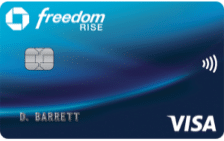
Chase Freedom Rise
- 26.99% variable based on the Prime Rate Regular Purchase APR
- 26.99% variable based on the Prime Rate Balance Transfer APR
- 29.99% variable based on the Prime Rate Cash Advance APR
At a Glance
The Chase Freedom Rise Visa is a credit builder card that can help you earn cash back rewards and double your credit line fast. The card works best with an eligible Chase checking account, as having one can greatly improve your approval odds.
- Best Benefits
- Rates & Fees
- Why Should You Apply?
- Earn 1.5% in cash back for all of your purchases
- Earn a $25 bonus for enrolling in in the first three months
- $0 annual fee
- Increase your credit line with 6 on-time payments
- Regular Purchase APR: 26.99% variable based on the Prime Rate
- Balance Transfer APR: 26.99% variable based on the Prime Rate
- Balance Transfer Transaction Fee: Either $5 or 5% of the amount of each transfer, whichever is greater
- Cash Advance APR: 29.99% variable based on the Prime Rate
- Cash Advance Transaction Fee: Either $10 or 5% of the amount of each transaction, whichever is greater
- Penalty APR: Up to 29.99%
- Foreign Transaction Fee: 3% of the amount of each transaction in U.S. dollars.
- Late Payment Penalty Fee: Up to $40
- Return Payment Penalty Fee: Up to $40
- You have a Chase checking account with a $250 balance
- You want to earn unlimited 1.5% cash back on all purchases
- You are new to credit cards
- You don't want to pay an annual fee
You've viewed 5 of 288 credit cards
What Is a Cash Back Credit Card?
A cash back credit card is a type of credit card that offers cardholders rewards in the form of money rather than miles or points. Cash back cards operate on a simple principle: you earn a percentage of the money you spend as cash back.
This reward is usually in the form of a statement credit or a direct deposit into your bank account, but other issuers allow cardholders to redeem cash back for gift cards and merchandise, deposits into eligible investment accounts, or by booking travel through loyalty travel portals.
The percentage of cash back you can earn varies depending on your credit card and purchase type. For example, you may earn 1% cash back on everyday purchases and 2% cash back on groceries or gas. Some credit cards even offer higher cash back rates for specific categories that rotate quarterly, like the Discover it® Cash Back or the Chase Freedom Unlimited.
How to Earn Cash Back
To earn cash back, use your cashback credit card for purchases. Every time you swipe your card or make an online transaction, you accumulate cash-back rewards. These rewards can quickly add up, especially if you use your credit card for all your regular expenses.
It’s important to note that not all transactions qualify for cash back rewards. To understand what qualifies for rewards, always read the fine print in your credit or debit card’s terms and conditions. Typically, the following transactions are ineligible for cash back:
- Balance transfers
- Card account checks
- Unauthorized or fraudulent transactions
- Cash advances
- Returns for credit
- Traveler’s cheques or foreign currency purchases
- Lottery tickets
- Money orders or wire transfers
- Reloading of prepaid debit or gift cards
- Card fees, late fees, or finance charges
How to Calculate the Effective Cash Back Rate
Understanding cash back rewards is crucial for maximizing your rewards when shopping. Most credit cards offer a straightforward cash back structure, such as 1% cash back on all eligible purchases. These basic rewards cards are available to individuals with all credit profiles, including those seeking credit cards for bad credit.
But what if you want to calculate your cash back rate to determine your total savings? How much are you potentially missing out on? Fortunately, calculating cash back is a simple process that involves using the following formula:
R = P x C / 100
Here’s what each variable represents:
- R: Effective cash back
- P: Purchase price
- C: Advertised cash back rate
Common Cash Back Categories
Here are some of the most commonly offered types of cash back rewards:
Which Type of Cash Back Credit Card is Best?
When it comes to cash back credit cards, the important question to ask is not which one is best overall, but which one is best for your specific situation. The easiest way to decide this is by determining which cash back rewards structure you’d like to work with: flat, rotating, or tiered.
Flat Rewards
Flat rewards are the easiest to manage as they offer a set amount (also known as a flat amount) for all purchases you make on your card. It’s common to see cards with a flat reward return rate of 1% to 2%. While that may not sound impressive, the tradeoff comes in how easy it is to determine how much you’ll get back from your purchases.
Rotating Rewards
Rotating rewards feature different bonus categories each quarter that you have to sign up for in order for your purchases to qualify. They generally yield a higher return than flat rewards cards, but you have to plan your purchases in advance to maximize your cash back earning potential. For example, one quarter may offer 3% cash back on travel expenses, but that category may be replaced in the following three months with rebates on gas or warehouse club purchases.
Tiered Rewards
Tiered rewards offer a comparably high return on purchases in a select category, but only up to a specific amount. After that, it’s common to see the cash back rate drop as low as 1%. For instance, a startup with a cash back credit card that rewards 5% on office supplies up to $2,000 a year may reach that limit in a single billing cycle. This limits how much they can earn going forward, but they also receive a big cash back bonus upfront that can be used for other supplies.
Secured Credit Cards
If you don’t yet have the necessary credit to qualify for an unsecured credit card, secured credit cards can be a good option. While the APR and benefits offered by some unsecured cards may be more appealing, they often have stricter application processes that evaluate personal income, assets, and other factors. In time, you’ll get there too
Benefits of Cash Back Credit Cards
Using a cash back credit card offers numerous benefits that can help you save money and manage your finances more effectively. One of the best advantages of these cards is the ability to earn money back on your everyday purchases. Whether you’re buying groceries, filling up your car with gas, or making online purchases, you can earn cash back on these expenses.
Another benefit of cash back cards is the chance to take advantage of additional perks and features. Many cash back credit cards offer introductory bonuses, allowing you to earn a substantial amount of cash back when you meet certain spending requirements. Some cards also provide benefits such as travel insurance, purchase protection, and extended warranties. These additional perks can add value and peace of mind when using your credit card for various transactions.
Lastly, cash back credit cards can also help you build and improve your credit score. Using your credit card responsibly and making timely payments demonstrates to lenders that you are a reliable borrower. This can open doors to better interest rates on future loans and credit cards. However, it’s crucial to remember that responsible credit card usage is key. It’s important to pay your bills on time and avoid a high balance to ensure your credit score remains positive.
How to Get a Cash Back Card
Ready to start earning cash back on your purchases? Getting a cash back rewards card is simple. Here’s a step-by-step guide:
- Research available options: Take the time to research the various cash back cards available in the market. Consider factors such as cash back rates, annual fees, and additional benefits to find the card that best suits your needs. Also, pay attention to promotional financing, such as 0% APR on purchases. These benefits can help you finance larger purchases while earning rewards.
- Check your credit score: Before applying for a credit card, it’s essential to check your credit score. Most rewards credit cards require a good to excellent credit score for approval. If your score is lower, consider improving it before applying.
- Gather required documents: Once you’ve chosen a cash back credit card, gather all the necessary documents to complete the application process. This typically includes proof of identity, income verification, and other personal information.
- Fill out the application: To access the application form, visit the credit card issuer’s website or call customer service. Fill out the form accurately and provide all the required information. After submitting your application, the card issuer will review it and make a decision. This process can take a few days to a few weeks. If approved, you will receive your card in the mail along with the terms and conditions.
What to Look for in a Cash Back Credit Card
Cash back credit cards are regularly compared to one another based on their rewards structure, categories, and other factors. Take the features below into account when shopping around for a new card.
Another thing to consider is the accumulated charges you may incur. All of the money that you could potentially earn back with even the best cash back credit card in your wallet would be meaningless if you’re stuck paying fees for using the card- and not necessarily irresponsibly either! Look out for high foreign transaction fees and balance transfer fees, as well as late payment fees if you already occasionally find yourself short at the end of statement periods.
| The Most Important Things to Look for: | ||
| Rewards categories | Just as you wouldn’t wear clothing in a size that’s not your own, you want to find the cash back rewards categories that fit you best. If you have an extended commute around the city that includes going to work, running errands, and picking the kids up from practice, a card that grants cash back on gas will likely earn you lots of cash back. | |
| Redemption options | Statement credits are a popular option, as are gift cards to big chain retailers and supermarkets, or a direct deposit into your bank account. Some cards give you the option of having a physical check mailed back to you if you want a paper trail of your rewards payouts, whereas others may give you the option to pay the funds forward to the charity of your choice. | |
| APR | The introductory interest rates offered by some cards are often a big selling point to new applicants. Once that period is over, though, the card’s regular APR may be too high to handle if you regularly carry over balances between billing cycles. You can offset this by paying off your balance in full each month or signing up for a credit card that has an APR that your budget can afford. | |
| Annual fee | It’s fairly common to find a cash back credit card that doesn’t charge an annual fee, but it may be tougher to find one with benefits as good as one that does. If you don’t want to pay too high of an annual fee or miss out on benefits that serve you best, the trick is to find a card with perks that outweigh the cost. Always check the annual fee and don’t get saddled with a card that won’t offer you enough value. | |
Tips for Maximizing Your Rewards
Once you have chosen the right cash back credit card, it’s time to focus on maximizing your rewards. Here are some strategies to help you make the most of your cash back:
- Use your card for everyday purchases: Make it a habit to use your cash back credit card for all your regular expenses, such as groceries, gas, and bills. By doing so, you’ll earn cash back on these everyday purchases and accumulate rewards faster.
- Take advantage of introductory bonuses: Many cash back credit cards offer generous introductory bonuses when you meet certain spending requirements within a specified timeframe.
- Optimize your spending: Some cash back credit cards offer higher cash back rates for specific categories or merchants. Take the time to understand these categories and plan your spending accordingly. For example, if your card offers 5% cash back on dining, consider dining out or ordering groceries from delivery apps like Uber Eats more often to earn more rewards in that category.
- Check for special promotions: Keep an eye out for special promotions and limited-time offers from your credit card issuer. These promotions may include increased cash back rates for specific merchants, statement credits, or seasonal promotions that can help you earn even more rewards.
FAQs
Here are answers from some of the most asked questions about cash back credit cards:
- Cash back credit cards are like any other rewards card. You make a purchase, and you get rewards in the form of points. Unlike other rewards cards, however, these credit cards offer the best redemption options as cash awards. These awards take the form of deposits into bank accounts, statement credits, or gift cards.
- Some card issuers, like Discover, offer a cashback match after the first year. A cash back match is when the bank automatically doubles your cash back after a set period. If you earn $100 in cash rewards, for example, the bank will double that to $200 – no questions asked.
- Points and cash back are mostly the same. All rewards cards earn points. Some cards, however, offer better redemption value for different options. Cards like the Chase Sapphire Cards are much better at travel than something like the Blue Cash Preferred Card from American Express for example.
- The time for points or cash back to show up in your account varies based on the transaction and the card issuer. Most transactions appear in your account within a few days, but sometimes cash back might not show up for a week or so. If you still do not see your cash back rewards after several weeks, contact your card issuer to get clarification.
- Some card issuers have limits on the minimum amount of rewards before cardholders can cash out. Others, however, have no minimum requirements. Deciding when to cash out is a personal decision. Many experts believe that redeeming cash back every month is an excellent habit to get into, as it can help reduce monthly payments and boost the amount of cash you have for everyday spending.
- The average credit card cash back is between 1% and 2%.
- To get the most out of a cash back credit card, you should carefully spend on bonus categories to maximize rewards.
- Not all credit cards offer rewards, like points, cash back, or discounts. Always read the card’s fine print before applying to ensure you don’t end up with a product you don’t want.
- In some cases, yes, though this is difficult. One easy way to get the most value from purchases is to stack offers or coupons. BestCards membership is a great way to boost your savings while using your desired credit card. And, it is free to join.
Conclusion
Cash back credit cards can be powerful tools for maximizing your savings and earning money back on your everyday purchases. By understanding how these cards work, the benefits they offer, and the various types available, you can make an informed decision and choose the right cash back credit card for your needs. Remember to use your card responsibly, pay your bills on time, and avoid carrying a high balance to fully enjoy the benefits of cash back rewards. With the right strategy and discipline, you can make the most of your cash back credit card and watch your savings grow
Editorial Disclosure – The opinions expressed on BestCards.com's reviews, articles, and all other content on or relating to the website are solely those of the content’s author(s). These opinions do not reflect those of any card issuer or financial institution, and editorial content on our site has not been reviewed or approved by these entities unless noted otherwise. Further, BestCards.com lists credit card offers that are frequently updated with information believed to be accurate to the best of our team's knowledge. However, please review the information provided directly by the credit card issuer or related financial institution for full details.

